 I think most young people go through a stage of “I want to be a vet when I grow up!”, and for the lucky few that keep the dream alive, the result can be a rewarding career. I grew up on a hobby farm in North Queensland, so it was the constant exposure to a wide array of animals that inspired me, and drove my passion for veterinary science.
I think most young people go through a stage of “I want to be a vet when I grow up!”, and for the lucky few that keep the dream alive, the result can be a rewarding career. I grew up on a hobby farm in North Queensland, so it was the constant exposure to a wide array of animals that inspired me, and drove my passion for veterinary science.
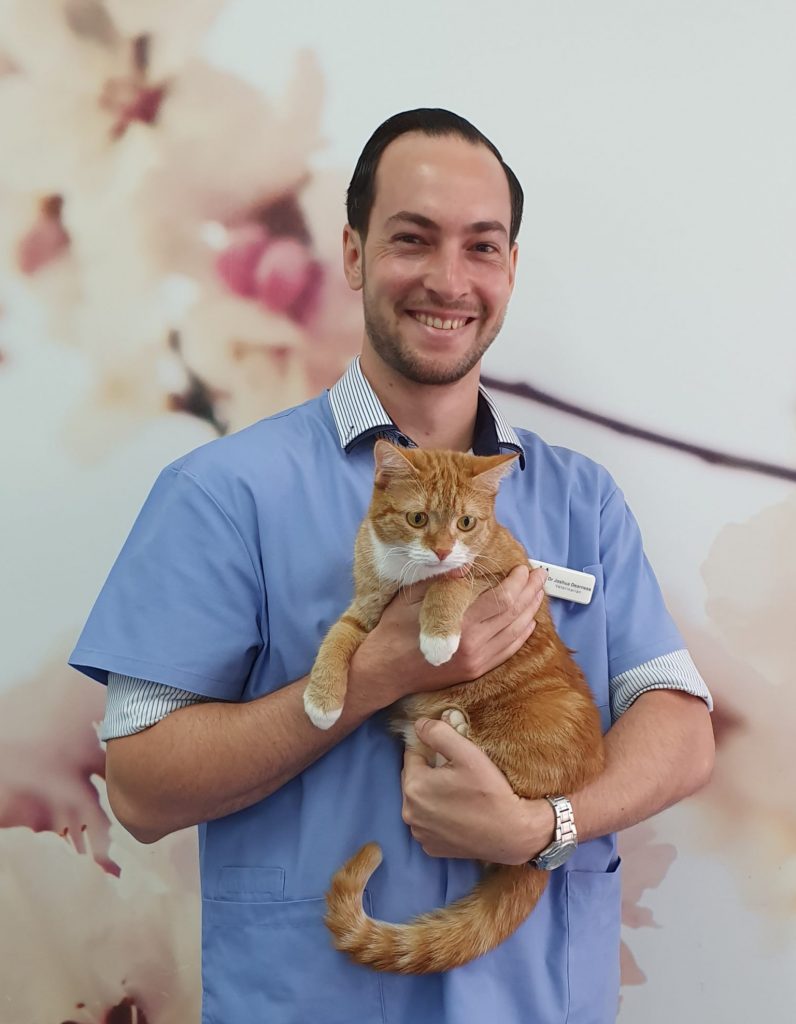 Honestly, it can be a hectic vocation and at times really full-on and challenging… but that’s why I love it; the variety keeps the job interesting and refreshing, and no two days are alike.
Honestly, it can be a hectic vocation and at times really full-on and challenging… but that’s why I love it; the variety keeps the job interesting and refreshing, and no two days are alike.
A small animal veterinarian is expected to have good general knowledge and a wide skill set. I believe the following are what a makes a good veterinarian:
• A given love of animals,
• Good communication skills amongst staff and clients,
• Empathy, patience, and sensitivity,
• Rational objectivity,
• A thorough, methodical approach,
• Scientific ability,
• Calmness in pressurised or emotional situations,
• Good time management and competency skills, and
• A team player.
General veterinary practitioner work includes undertaking routine consultations and vaccinations, geriatric care, teeth cleaning and extractions, X-ray and ultrasound imaging, sedation/anaesthetic care, soft tissue and orthopaedic surgery, behaviour, and euthanasia… basically we do it all!
Every good day starts with breakfast and a nice cup of coffee! Each weekday the Practice operates with a four vet team; two veterinarians attend to the busy consultations, while the other two veterinarians are scheduled on surgery. This allows for consultations to be available from 8am-7pm and surgery to operate from 8-4pm. 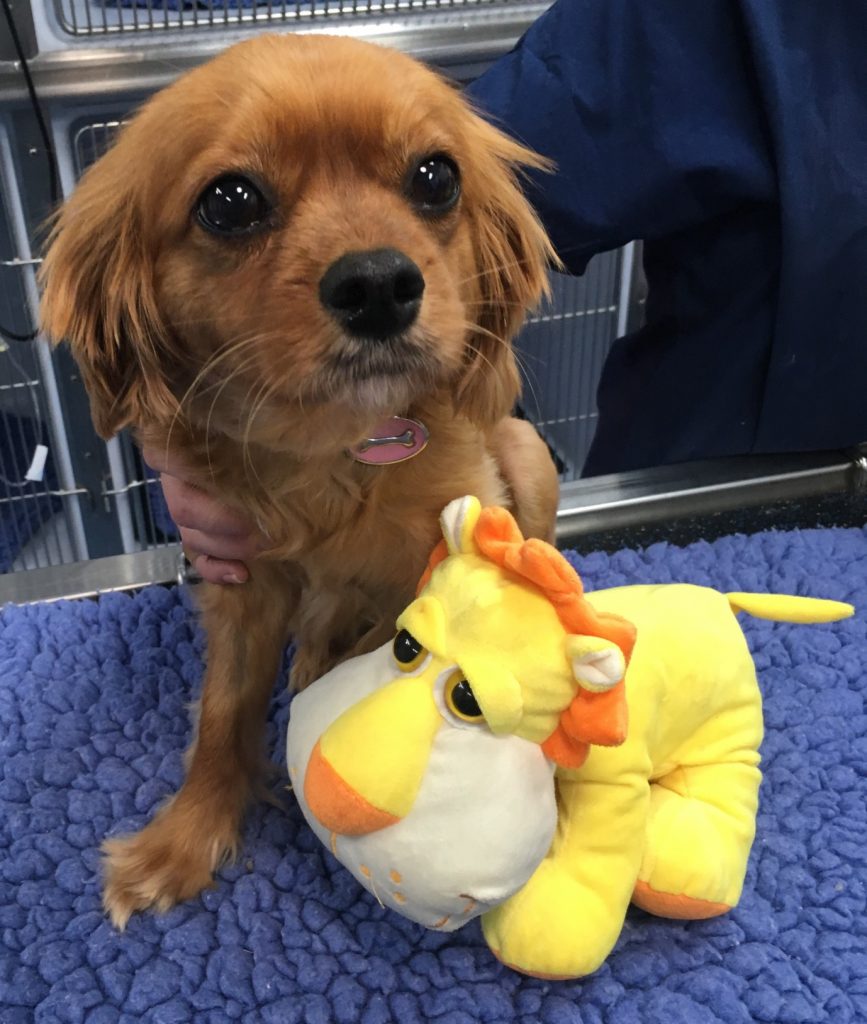
Three receptionists are at the frontline, and they are incredibly valued staff. They busily attend to appointment scheduling, insurance claims, stock take, and are the first to greet your beloved pet as they enter the Practice. Some animals are nervous and anxious, but this is often alleviated with the never ending treats and pats provided on reception.
The busy day is planned well before the Practice opens at 8am. Laboratory reports including blood results are reported to owners awaiting a further treatment plan of their beloved fur-family member. Likewise, we receive emails from local emergency clinics detailing any unfortunate visits that have occurred overnight, and the owners of these animals are then phoned, and follow-up appointments are made if necessary. Most days, we have hospital patients that have stayed overnight, these are checked on before the Practice opens. Premedications and anaesthetic induction agents are prepared for the day’s surgical list. All staff in the building are then gathered for the initial ‘rounds’ at 7:45am. Every inpatient or surgical case is presented by the lead vet, and a plan is discussed as a team.
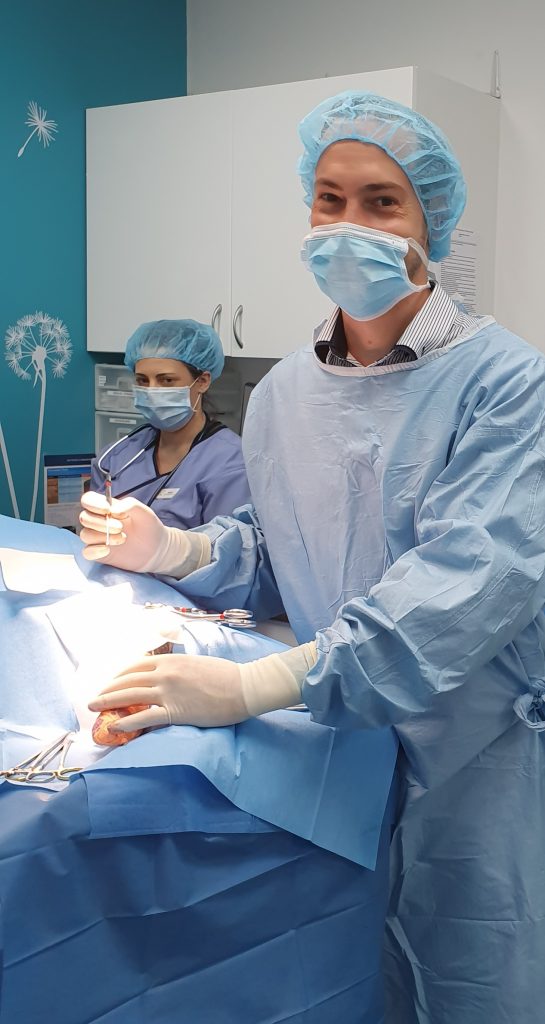 The day’s surgical patients are admitted by either the surgical veterinarians or the nursing team. The animal’s history and vital signs (heart rate, temperature, gum colour, respiratory rate) are gathered to ensure they are well enough to undertake the planned procedure for the day. Surgeries are planned according to triage and cleanliness. Therefore, emergencies take precedence over planned surgeries, and clean surgeries are performed before any dirty procedures (such as dental work and abscess draining).
The day’s surgical patients are admitted by either the surgical veterinarians or the nursing team. The animal’s history and vital signs (heart rate, temperature, gum colour, respiratory rate) are gathered to ensure they are well enough to undertake the planned procedure for the day. Surgeries are planned according to triage and cleanliness. Therefore, emergencies take precedence over planned surgeries, and clean surgeries are performed before any dirty procedures (such as dental work and abscess draining).
On any given day, the surgeons will complete routine procedures such as dental scale and polish, teeth extractions for diseased teeth, desexings, eye problems, cancerous lump removals, abdominal surgery, ultrasounds, and x-rays. It is not uncommon, however, for our vets to be tasked with more complex things including airway, abdominal, and orthopaedic surgeries. It generally takes four hours of steady work to complete the list of the day’s surgeries, with the aim to finish up around 1pm, in time for lunch… which is also very important!
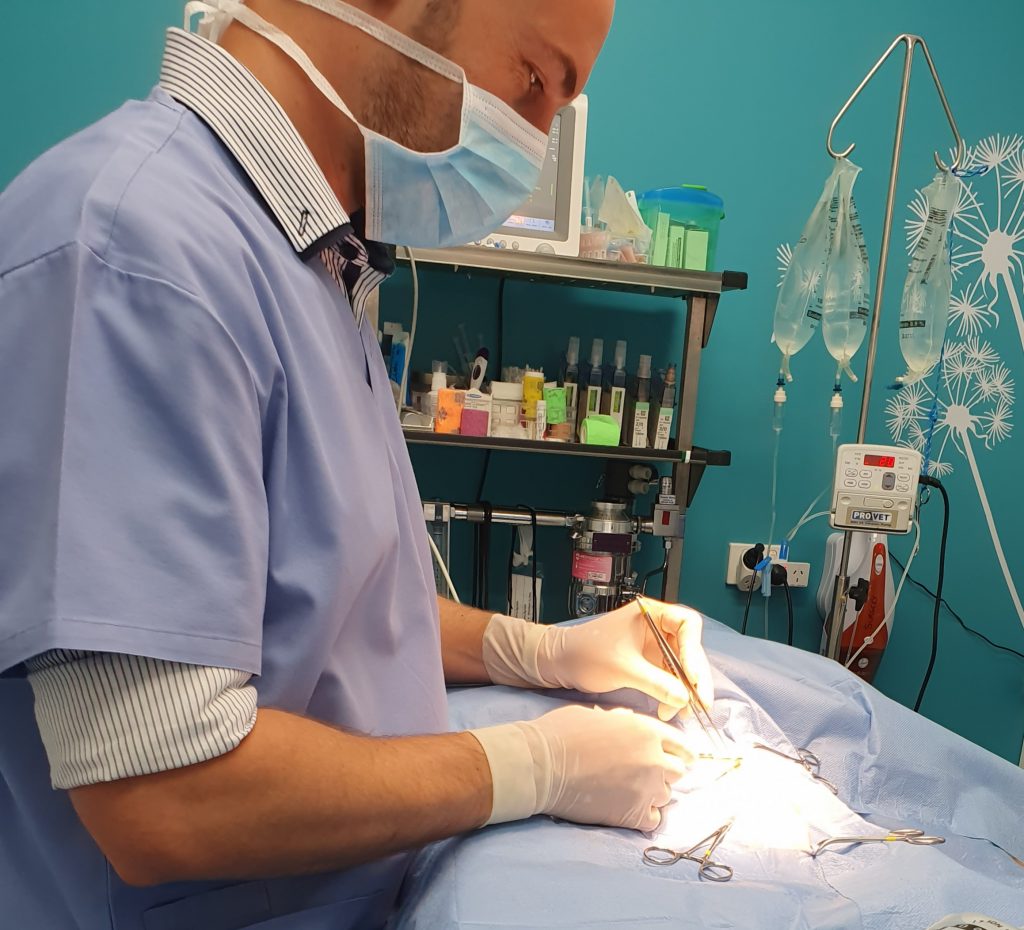 I’ve been a vet for 10 years now, so I’ve seen and done a few things. Some of my personal career highlights have been learning orthopaedic surgery, mainly to correct ruptured cruciate ligaments in dogs and cats. I have also assisted in interesting surgical cases. One that comes to mind is a life-saving open chest surgery on a dog’s heart to remove a cancerous growth on the pericardium (the heart sac). All went well with that patient and gave him an extra 2 years of happy life. Another memorable case was to help bone plate and screw a chimpanzee’s fractured forearm at a zoo to see it wake up and hang from a tree with the freshly repaired forearm (a little worrying!!!). Again, the Chimp went on to have full function of the arm. These were certainly all experiences that I’ll never forget!
I’ve been a vet for 10 years now, so I’ve seen and done a few things. Some of my personal career highlights have been learning orthopaedic surgery, mainly to correct ruptured cruciate ligaments in dogs and cats. I have also assisted in interesting surgical cases. One that comes to mind is a life-saving open chest surgery on a dog’s heart to remove a cancerous growth on the pericardium (the heart sac). All went well with that patient and gave him an extra 2 years of happy life. Another memorable case was to help bone plate and screw a chimpanzee’s fractured forearm at a zoo to see it wake up and hang from a tree with the freshly repaired forearm (a little worrying!!!). Again, the Chimp went on to have full function of the arm. These were certainly all experiences that I’ll never forget!
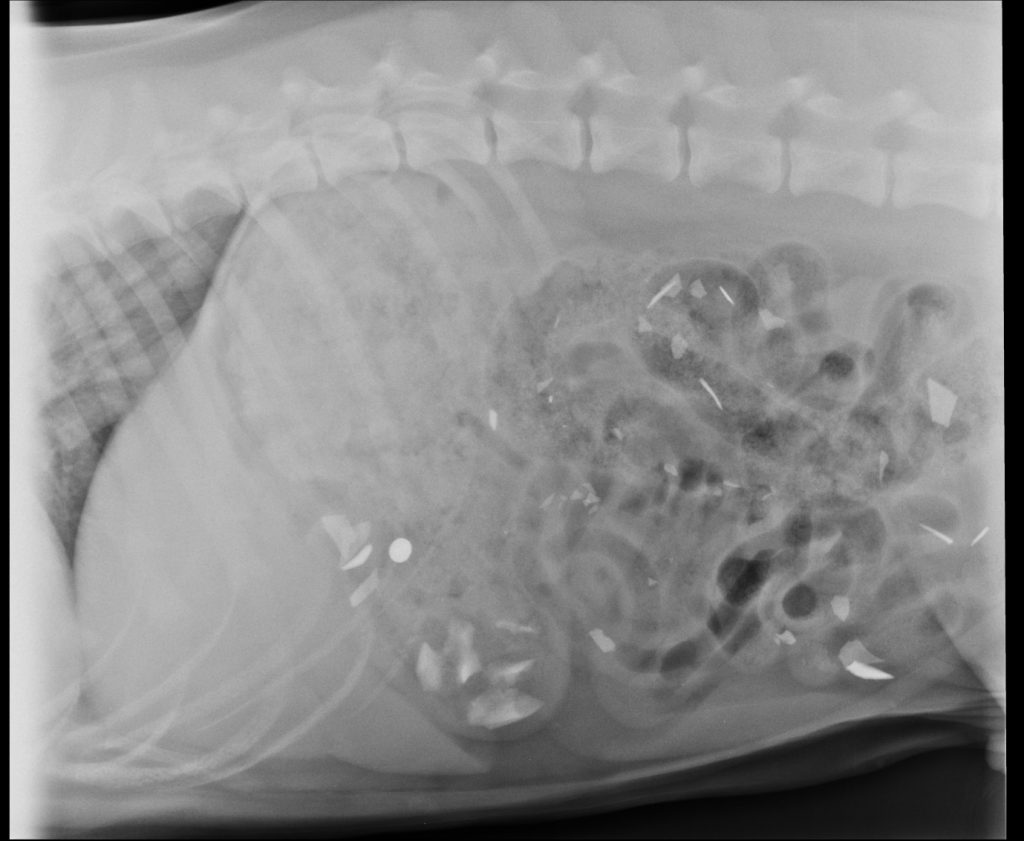
The consulting vet finishes appointments around midday, and there are usually follow up phone calls as well as some in-house procedures (such as blood tests). At 1:45pm, the team gathers once again for a second set of ‘rounds’ and everyone is updated on the progression/ plan of the day.

Consults begin again at 2pm and continue through the evening until close at 7pm. It’s not uncommon to have an emergency that needs to be seen on closing.
Once the consults are done for the day, plans are made for any patients staying overnight or being transferred to emergency, we head home for the night to get a good night’s sleep and wait to do it all again tomorrow.
Ultimately, it’s the variety and challenges of the job that keep things interesting as you can never predict what your day is going to be like… and I couldn’t imagine myself doing any other job.
Dr Josh.

